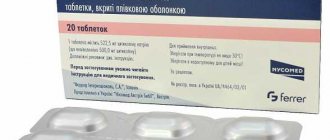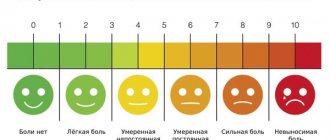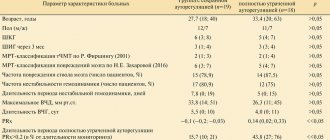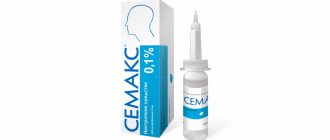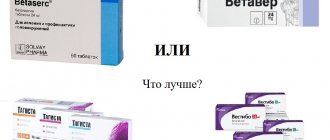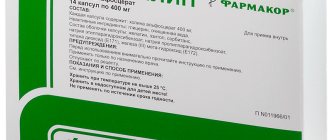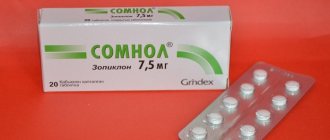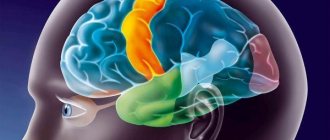Instructions
Ceraxon and Mexidol are used to normalize cerebral circulation in severe forms of pathologies or after injuries.
Ceraxon and Mexidol are used to normalize cerebral circulation in severe forms of pathologies or after injuries.
The effects of drugs on the body
Ceraxon is used to optimize the metabolism of brain tissue, which helps improve memory, concentration, and mental activity. Mexidol is recommended to be used to restore thought processes, mental activity, memory, speech, get rid of dizziness and convulsions in acute cerebral circulatory disorders.
The combined use of drugs improves the conductivity of nerve impulses and activates the process of regeneration of nervous tissue.
The combination of drugs helps stabilize the condition of a patient with cerebrovascular accident, improve memory, speech, and restore mental activity.
The principle of action of the drugs
Actovegin contains inositol phosphates, which are responsible for the anabolism of glucose and oxygen in the body and prevent the accumulation of lactate in tissues, which affects their normal metabolism. Apoptosis of nerve cells is provoked by stress and external factors, activating beta-amyloid peptide. The drug inhibits the effect of this peptide on the nerve cell.
The neuron also contains ADP-ribose polymerase, which has a transport function in the process of repair and identification of breaks in single-stranded DNA.
With an excess amount of this enzyme, degenerative processes and metabolic disorders in the cell can occur, which provokes its death. It was found that Actovegin inhibits the synthesis of ADP-ribose polymerase, preserving the integrity of the nervous system.
It also improves blood circulation in the bloodstream, affecting vascular tone, capillary blood flow, synthesis of endothelial oxide synthase and sphincters.
The drug eliminates cognitive impairment in patients after strokes and is often used for the symptomatic treatment of dementia. In cases of peripheral blood flow impairment, it improves limb mobility.
The drug also accelerates the conduction of nerve impulses in cases of diabetic polyneuropathy. The effect of the drug appears 30-50 minutes after administration. The maximum effect is observed within 3-6 hours.
Mexidol has anxiolytic and nootropic effects, prevents destructive processes in the surface layer of membranes and blood vessels, protects the body from the effects of stress, and inhibits the catalysis of free radicals.
Increases the body's resistance to the negative influence of external factors, such as intoxication, shock, hypoxia, and destruction of brain vessels. Improves blood fluidity, affects the properties of blood cells, controls the amount of cholesterol and reduces low-density lipids, inhibits the process of platelet adhesion and sedimentation.
The drug Mexidol performs the following functions:
- Inhibits the processes of lipid catabolism, affects the maintenance of the balance of proteins and lipids.
- Promotes the formation of superoxide dismutase, which is an antioxidant enzyme and protects the body from the accumulation and toxic effects of oxygen free radicals.
- Maintains membrane structure and reduces its viscosity, reducing the amount of lipids due to its effect on membrane-binding enzymes.
Increases the amount of the brain neurotransmitter - dopamine.- Under anaerobic conditions, it activates glucose catabolism, increasing the amount of adenosine triphosphate and creatine phosphate, and also activates the energy function of mitochondria in cells.
- In cases of neuropathy, it helps prevent destruction of the optic nerve and light-sensitive cells of the retina, increases their functional activity and improves vision.
The active effect of the drug is observed within 2-3 hours after administration. Together with the blood, it is transported throughout the body and is quickly broken down. It is eliminated from the body by the genitourinary system.
At the same time, Cerakson and Mexidol are taken for the following diseases
A combination of drugs may be prescribed for:
- Acute cerebrovascular accident, including those caused by traumatic brain injury.
- Last stage pancreatitis.
- Severe forms of varicose veins, atherosclerosis.
- Diabetes mellitus.
- Stroke.
Medicines can be used to restore the elasticity of brain cells and relieve the negative effects of radiation therapy.
Mexidol can be used to restore the elasticity of brain cells and relieve the negative effects of radiation therapy.
Instructions for use
Actovegin is mainly used in small doses. The amount should not exceed 5 ml per day, since the medicine belongs to hypertonic solutions. Before administration, it is necessary to make a test injection to detect allergic reactions to the drug. In cases of severe condition of the patient, 10-20 ml of the drug per day is initially administered, later 5 ml is administered daily.
For administration via droppers, 10-40 ml of medication is added to 200-300 ml of isotonic glucose solution. This dropper is designed for 1-2 times, their frequency is determined by the patient’s condition. When treated during pregnancy, the dose is adjusted by the doctor.
The introduction of Mexidol should occur gradually. As a rule, 50-100 ml of medicine is diluted with 200 ml of sodium chloride and dripped 1-3 times. 800 ml per day is considered the maximum amount of medication for use. For emergency treatment, the drug is administered intramuscularly at 200-300 ml once a day, and treatment is continued with 100 ml 3 times a day for several weeks.
It is imperative to know how to use Mexidol and Actovegin together. Thus, when using them together, it is necessary to administer the drugs one at a time in order to avoid destruction of the chemical structure of the constituent substances and the manifestation of deviations in the functioning of the body.
Drugs in tablet form are used in the same way - one or two tablets three times a day for 2-6 weeks.
special instructions
With sequential administration of medications, the risk of developing side effects in the form of a negative response from the immune system increases.
Pregnancy and lactation
Medicines are used for health reasons; the risk to the fetus and the pregnant woman has not been studied.
Childhood
In pediatric practice, medications are used to relieve acute conditions as prescribed by the attending physician.
Elderly age
For elderly patients, individual dosage determination is necessary, taking into account the presence of concomitant pathologies and medications taken.
General information about Actovegin
Actovegin is a drug belonging to the pharmaceutical group “tissue regeneration stimulator”, and helps improve metabolism at the macro and micro levels.
The drug is made on the basis of deproteinized calf blood, therefore it contains exclusively physiological substances. Also contains sodium chloride and water in the form of binders. The drug is considered an effective antihypoxic agent and is presented in the form of a solution, tablets and ointment.
Mexidol is a drug belonging to the pharmaceutical group of antihypoxants, and has a positive effect on the functioning of the central nervous system. It is administered intravenously or intramuscularly. The main component of the drug is Mexidol or ethylmethylhydroxypyrimidine succinate.
Also contains sodium metabisulfite, lactose monohydrate, sodium carmellose and water as excipients. You can buy it both in tablets and in the form of a solution. It is considered an effective antioxidant and antihypoxic agent.
Side effects of Ceraxon and Mexidol
The list of undesirable effects of the drug includes:
- dyspnea;
- nausea, diarrhea, pain in the abdominal area;
- headache;
- temporary hearing loss.
If there is hypersensitivity to the components of the medicinal mixture, rashes or burning of the skin and the development of swelling may occur.
Side effects of Cerakson include shortness of breath, nausea, diarrhea, and pain in the abdominal area.
Headache and venous congestion
Venous stagnation (or disturbances of venous outflow from the cranial cavity) is a syndrome that often occurs with headaches of various types. Unfortunately, it is a common situation when venous outflow disorders are not taken into account in the treatment of tension headaches and migraines; as a result, patients suffer for years.
Even though venous outflow disorders are often described during head studies (MRI, vascular ultrasound), they are practically not taken into account in combination with other signs and complaints of the patient.
Manifestations of venous stagnation
Venous pressure inside the cranial cavity normally changes constantly - it increases with straining, coughing, sneezing, and decreases with rest. If venous outflow becomes difficult, characteristic complaints may appear:
- Heaviness in the head and pain in the morning.
- Swelling of the face (especially the eyelids) after sleep.
- Bursting headache.
Disturbances of venous outflow and nature of pain
Disturbances in venous outflow can change the nature of pain in patients with tension-type headaches. For example, pressing pain in the temples is accompanied by heaviness in the head after sleep.
There are even situations when disturbances in venous outflow are the main and only cause of headaches, and tension headaches come later.
The situation is no easier for migraine patients. In addition to the migraine itself, many also experience tension in the neck muscles and impaired venous outflow. In such patients, headaches almost never stop.
In practice, it turns out that an incorrect diagnosis (without taking into account venous outflow disorders) leads to long-term and ineffective treatment of headaches.
Difficulties in diagnosis
How can a doctor suspect the presence of a “venous factor”? After all, as we see, complaints with venous stagnation are not so specific. Only on the basis of symptoms such as swelling of the face and heaviness in the head in the morning, a correct diagnosis cannot be made.
The patient should be asked about changes in pain patterns and headache frequency. Since the tone of the veins can change with changes in atmospheric pressure, weather or cycle phase in women, all this must be taken into account.
Venous congestion can be confirmed using the following methods:
– Consultation with an ophthalmologist - dilated veins will be visible in the fundus. – Ultrasound examination of blood vessels - a decrease in the speed of blood flow through the veins will be noted. – Magnetic resonance imaging in phlebographic mode - dilated venous sinuses and veins will be noticeable.
However, the conclusion “impaired venous outflow” in itself does not carry much value - what is more important is the full clinical picture with the specifics of your complaints.
How to treat?
With regard to drugs for disrupting venous outflow from the cranial cavity, the situation is complex. There are currently no effective drugs with proven action against veins inside the skull. In practice, vascular drugs (for example, Cavinton) and metabolic drugs (Mexidol) are often prescribed, which may cause some improvement (although their effect has not been proven). Sometimes venotonics (for example, Detralex) are prescribed with a positive effect
Among other methods of treating headaches with impaired venous outflow, the methods of manual therapy, massage, and physiotherapy (if there is tension in the neck muscles or the effect of osteochondrosis on the blood vessels) have proven themselves to work well in practice.
Timely detection of venous outflow disorders and consultation with a neurologist can protect against progression and chronicity of pain.
Be healthy!
Maria Meshcherina
Photo istockphoto.com
Joint effect
The simultaneous use of a nootropic drug and an antioxidant is possible, since the drugs are non-toxic and do not have a teratogenic effect. Both medications have an effect on the restoration of motor and cognitive properties in a patient after a stroke.
Medicines have a synergistic effect and reduce the area of ischemic damage.
Ceraxon interacts with the antioxidant and its effect is enhanced. With the simultaneous use of drugs, oxygen starvation is reduced, platelet aggregation is reduced, and cell death is prevented.
Contraindications
Both medications are contraindicated in case of individual intolerance, liver and kidney diseases. Ceraxon is not prescribed to patients under 18 years of age. The nootropic drug is contraindicated in cases of increased tone of the parasympathetic nervous system.
Ceraxon is not prescribed during pregnancy and breastfeeding. The antihypoxic drug should not be taken for allergic diseases that lead to the development of dangerous side effects.
Ceraxon is not prescribed during pregnancy and breastfeeding.
